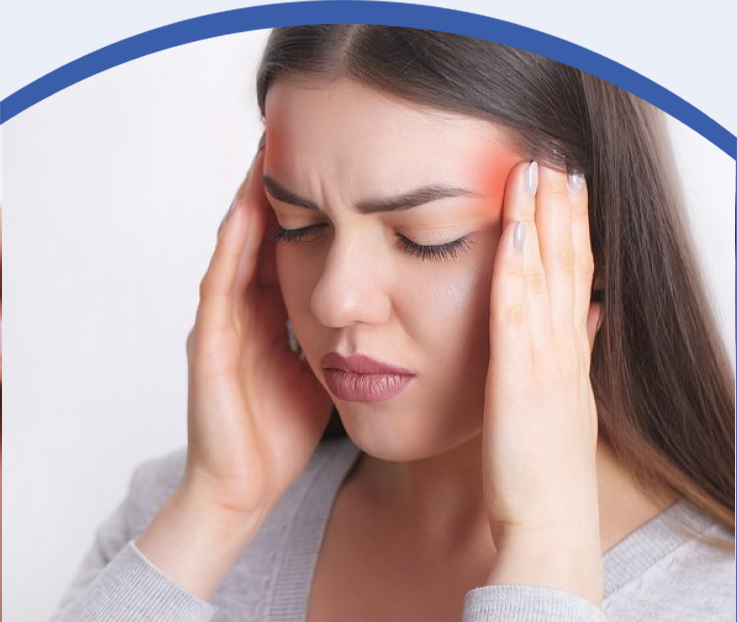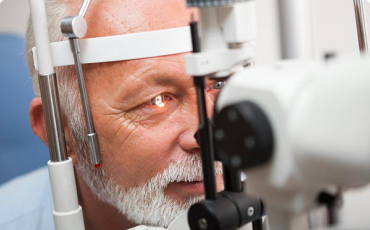Welcome! You’re probably here for one or more of the following:
• You have experienced symptoms such as headaches, blurry vision, dizziness, or anxiety over a short or extended period of time
• You have seen one or more specialists for your symptoms and nothing seems to help
• You have experienced a concussion or traumatic brain injury (TBI) You have been diagnosed with ADHD, dyslexia, other learning disabilities
• You were asked by a friend to “just take the test”
How is a Traumatic Brain Injury Treated?
Patients often try several combinations of medications and therapies trying to find relief from their TBI symptoms and painful headaches. Patients will also consult with many specialists including chiropractors, neurologists, psychiatrists, ENTs, and otologists just to try to find some type of symptom relief. Often, however, these treatments fail, and evaluations turn out inconclusive. This is because doctors treat the wrong condition.
As more research emerges, most of the time the headaches and dizziness that patients present are typically the result of Binocular Vision Dysfunction (BVD).
I want to know how TBI relates to BVD

I was riding my motorcycle and was hit from behind. The years that followed were filled with excruciating pain. I couldn’t cut the grass, cook, or do much of anything. Then, one of my therapists referred me to a BVD specialist. When I put on the trial lenses, the pain instantly left. This is the real deal.
– Roy –
What are the symptoms of Binocular Vision Dysfunction?
misalignment occurs, there is a disconnect in communication between the visual system (oculomotor) and the inner ear (vestibular) system. When the vestibular system is not working correctly, the eyes will be slightly misaligned. This will cause double vision, which the body will not tolerate, and the oculomotor system will work to correct the misalignment. This triggers the defective vestibular system and forces the eyes to misalign again.
This constant back and forth between the oculomotor and vestibular systems is what causes the painful symptoms of BVD. If you are suffering from BVD, you may experience any or all of the following symptoms:
- Vestibular Symptoms: Nausea, motion sickness, poor depth perception, drifting or instability when walking, and/or poor coordination
- Vision Symptoms: Overlapping vision, double vision, reflection or glare issues, sensitivity to light, and/or blurred or shadowed vision
- Pain Symptoms: Achiness in the face, pain when moving the eyes, general eye pain, achiness in the neck caused by head tilt (BVD sufferers commonly walk with their head titled down and look through the tops of their eyes as it can help adjust the misalignment), as well as/or pain in the upper back
- Reading Symptoms: Frequently losing your spot, difficulty with reading and comprehension, skipping lines, words running together or blurring, and/or trouble concentrating
- Psychological Symptoms: Experiencing anxiety in large crowds, in big open buildings (like department stores), and while driving on freeways
Some patients may only consider these symptoms a minor inconvenience, while others may struggle to function and are afraid to leave the house. Regardless of the severity of your symptoms, it is necessary to undergo a thorough examination to fully understand your condition.
Adults and children can both suffer from BVD. If you believe you are experiencing symptoms of BVD, or if you think your child is exhibiting symptoms of BVD, it is important to schedule an appointment with a vision specialist who understands and treats this condition.
I need to schedule an appointment

What are the types of Binocular Vision Dysfunction?
As this condition is studied more, it is understood that TBI can bring on BVD. While there are many forms of BVD, the two most prevalent are Superior Oblique Palsy and Vertical Heterophoria.
Superior Oblique Palsy (SOP) can also be called fourth nerve palsy or trochlear nerve palsy. SOP occurs when the superior oblique muscle is weakened. This results in eye misalignment which can be vertical, horizontal, or torsional, and range from slight to severe. Even minor forms of SOP can produce symptoms and prohibit normal functions in daily life.
Vertical Heterophoria (VH) is characterized by a misalignment of the eyes on the vertical plane. Most of the time, the misalignment with VH is so minor that it is missed during routine eye exams. Many patients experiencing VH may have been told they are suffering from sinus issues, as most of the headaches will occur around the areas of the sinus cavities.
How is Binocular Vision Dysfunction treated?
The good news is relief is possible if you have BVD. To properly diagnose the type and degree of BVD, a NeuroVisual Evaluation must be performed. A NeuroVisual Evaluation is a comprehensive and detailed eye examination that can pick up on even the slightest misalignment of the eyes. A standard eye exam will not detect minor cases of BVD.
The team at Vision Specialists of Michigan uses special glasses with aligning lenses that contain prisms to correct visual misalignment, far vision, and near vision issues. This treatment is extremely effective, and patients will experience dramatic relief of their symptoms quickly. Some patients even report that symptoms have gone away completely.
NeuroVisual Examination with Vision Specialists of Michigan
TBI is a serious condition that can lead to BVD and many painful symptoms. Don’t let your vision and health suffer any longer. Let the team at Vision Specialists of Michigan get you confidently back on your feet. Call us to schedule an appointment and we can get you on the path to recovery.










